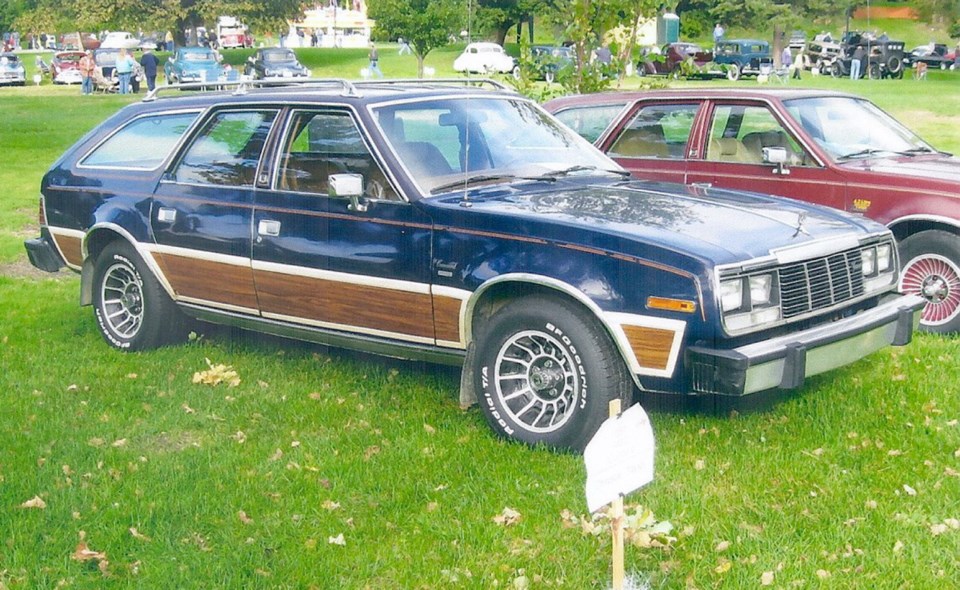American Motors Corp. was formed by the amalgamation of Nash Motor Co. and Hudson Motor Co. in 1954. It had a few good years in the 1950s, but was never rich enough to match the Big Three (GM, Ford and Chrysler) in product development. This forced chief stylist Richard Teague to become so skilful at creating new cars out of old ones that it made him something of a legend in the industry.
Thus, the Rambler metamorphosed into the 1970 Hornet. Then for 19701Ú2 Teague created the subcompact Gremlin by chopping the rear end off the Hornet. It was the industry’s first subcompact, beating the Big Three by half a year. Even the Gremlin got reincarnated and renamed the Spirit in 1979.
In between, Treague created a new design, AMC’s “fishbowl” Pacer, a unique turtle-shaped style originally intended to have a Wankel rotary engine. When that power was abandoned, the Pacer was compromised by getting old AMC technology that made it heavy and thirsty, far from the svelte, space efficient lightweight, front-wheel-drive economical machines being offered by such imports as Volkswagen and Honda. Sales were disappointing.
For 1978, the Hornet (née Rambler) was transformed once again, this time into our subject, the Concord, a luxury version of a car that AMC hoped would stop the downward sales spiral brought on by relentless competition from both American and foreign brands.
The Concord, Spirit and Concord-based four-wheel drive Eagle would be the last AMC-designed cars. In fact, AMC’s most successful product wasn’t a car at all, but the venerable Jeep brand which AMC had shrewdly acquired in 1970.
Renault of France took control of AMC in 1979, and AMC-designed cars would be gradually phased out as the Renault-based products took over. The Concord and Spirit were gone in 1983, although the versatile Concord-based four-wheel drive Eagle carried on until 1987.
When AMC introduced the save-the-farm Concord for 1978, it was loaded with comfort and luxury features right down to a half-vinyl roof. Marketed as an upscale luxury compact, AMC hoped it would appeal to those seeking a combination of convenient size and a roomy, sumptuous interior. Thus it was stuffed, folded and carpeted to within an inch of its life, and came at a competitive price starting in the mid-$4,000 range.
Mechanically, the Concord was traditional AMC, which meant sturdy but unexciting. Under the unit-construction body were three available engines: the base 3.8-litre (232 cu. in.) overhead-valve inline six; a slightly larger 4.2-litre (258 cu. in.) version of the six; and a 5.0-litre (304 cu. in.) overhead valve V-8. Transmissions were a three- or four-speed manual or three-speed automatic.
Dimensions were in line with compact car norms with a wheelbase of 2,743 millimetres, overall length of 4,663 mm and height of 1,303 mm. It weighed a rather portly 1,610 kilograms.
Brakes were disc fronts and drum rears, and suspension was the usual AMC control arms in front with high mounted coil springs. The solid rear axle was suspended on longitudinal leaf springs.
The exterior feature that most distinguished the Concord from its Hornet forebear was a prominent egg-crate grille flanked by rectangular headlamps. The overall styling was pleasant and appealing, if unexciting. The model lineup was comprised of a two- and four-door sedan, a four-door wagon and a two-door hatchback coupe.
Driving characteristics were generally uninspiring, with lots of roll in corners. As Car and Driver road testers said: “You have the eerie feeling, in steering the Concord down the road, that somehow, something isn’t quite right, isn’t quite integrated.” They found the ride comfortable enough, but did have some assembly quality reservations.
The Concord V-8 that C&D tested recorded zero to 100 km/h in 10.4 seconds and a top speed of 160 km/h, adequate but no ball of fire. The six-cylinder engine would have been considerably slower.
One can only speculate on how tranquil the performance would be with the little Audi-designed, single-overhead-cam 2.0-litre (122 cu. in.) four that was offered in the Concord in 1979, followed by the 2.5-litre Pontiac overhead-valve four from 1980 to ’82. They were products of those fuel-economy-obsessed years.
The Concord and spin-off four-wheel drive Eagle were, as noted, AMC’s last shot at trying to stay in the market with an American-designed car. The Concord was sold until 1983 before it quietly disappeared from the scene.
AMC-Renault continued offering Renault-designed cars, most notably the Alliance, and Jeep products. Renault finally gave up trying to market cars in North America in 1987 and sold AMC to Chrysler, which turned it into the Jeep-Eagle division, now part of Fiat Chrysler Automobiles.



